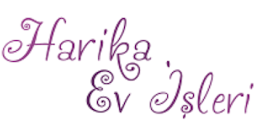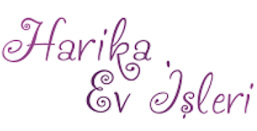Hello, knitters! Vicky here, bringing you an incredibly simple and straightforward knitting project perfect for beginners. This straight-cut vest is designed to be super adaptable to any size and uses the easiest stitch there is. You'll love how quickly it comes together!
I'm based in Mar del Plata, Argentina, and we ship our yarns and kits nationwide. For this project, I'm using about 600 grams of a semi-thick yarn – a beautiful, soft blend of wool, cotton, and fiber. If you're in Argentina, you can order a complete combo via WhatsApp and get a free gift!
Let's dive into creating this cozy vest.
Understanding Your Materials and Gauge
The most crucial step before starting any knitting project is understanding your yarn and needle combination, and how it affects your knitting tension (gauge). This ensures your finished project matches the intended size.
For this vest, I'm using 12 strands of a cotton, acrylic, and wool blend, paired with 7-millimeter needles. The stitch we'll be using is the Santa Clara stitch, also known as garter stitch in many other countries (you might also hear it called snake stitch, cord stitch, or moss stitch). It's the simplest stitch on two needles: every single row is knit stitch. That's it! You just insert the needle, wrap the yarn, and pull it through.
Creating Your Swatch
To determine your gauge, you'll start by casting on 10 stitches. If you're unsure how to cast on, I've demonstrated my preferred method in my "Friday Sweater" video (it's too long to explain slowly here!).
Knit these 10 stitches in Santa Clara (garter) stitch for a few rows. You don't need to knit a huge piece; just enough to see how the fabric looks. This small sample serves two vital purposes:
- Check your tension: Do you like how the stitches look? Is it too loose or too tight? If not, change your needle size (larger for looser, smaller for tighter).
- Calculate your stitch count: This is key! Once you're happy with your tension, measure the width of your 10 stitches.
In my case, 10 stitches measured 9 centimeters. I strongly recommend writing this down: "9 centimeters = 10 stitches." This simple equation is your superpower for adapting this pattern to any yarn and needle size!
The Rule of Three: Calculating Your Stitch Count
Now, let's calculate how many stitches you need for your desired width. We'll use the rule of three.
My desired back width, from shoulder to shoulder, is 72 centimeters. This creates a nice, loose, oversized fit that adapts well to sizes S, M, and L. If you prefer it even wider for an XL, you can add 10 more centimeters, aiming for about 82 centimeters.
Here's the calculation:
- Your desired width (cm) x your swatch stitches / your swatch width (cm) = total stitches to cast on
So, for my 72 cm back:
Therefore, I'll cast on 80 stitches for the back piece. This will give me a back piece approximately 72-73 centimeters wide, which is quite generous and provides that comfortable, oversized look.
Knitting the Back Panel
Once you've cast on your calculated number of stitches (80 in my example), simply knit every row in Santa Clara (garter) stitch until your piece measures 60 centimeters in length. Of course, you can adjust the length to whatever you find most comfortable.
Binding Off the Back Panel
When you've reached your desired length, it's time to bind off (close) all your stitches in the traditional way.
- Knit the first stitch.
- Knit the second stitch.
- Carefully lift the first knitted stitch over the second knitted stitch and off the needle.
- Continue this process: knit one stitch, then lift the previous stitch over it and off the needle.
- Don't pull too tightly while binding off to keep the edge flexible.
- When you have only one stitch left, cut the yarn, leaving a long tail, and pull the tail through the last loop to secure it. This long tail will be incredibly useful for sewing later, as it eliminates the need to attach new yarn.
Congratulations! Your back panel is complete.
Knitting the Front Panels (Two Identical Pieces)
The front of the vest consists of two identical pieces. Since the Santa Clara stitch is reversible, you don't need to worry about mirroring them; you'll simply knit both in the same way.
For each front panel, I cast on 40 stitches, which is approximately 36 centimeters wide (again, adjust based on your own gauge calculation if you're using different yarn).
Knit straight in Santa Clara (garter) stitch until each front panel measures 60 centimeters in length (or your desired length, matching the back panel).
Shaping the Neckline on the Front Panels
Now, we'll create the neckline on each front panel. This forms a "tuxedo" style collar that will be joined at the back of the neck.
- From the 60 cm length, you're going to bind off some stitches at one end of your work (this will be the shoulder seam) and continue knitting the remaining stitches for the neckband.
- Bind off stitches using the same method as before (knit two, pass the first over the second), but this time, you'll stop binding off when you have 12 stitches remaining on your needle.
- Continue knitting these 12 remaining stitches in Santa Clara (garter) stitch for approximately 10-11 centimeters. This length will form the collar.
- Finally, bind off these last 12 stitches traditionally.
Repeat this process for the second front panel. Now you have two identical front pieces with their neckbands.
Assembling Your Vest: Sewing It All Together
With your back and two front panels complete, it's time for the fun part: assembly!
Joining the Neckband
Take your two front panels. We'll start by joining the two neckband sections together. The visible side of your fabric (the "right side") will be where you sew.
- Lay the two neckbands together, aligning the edges.
- Using a sewing needle and the long yarn tail you left, sew the ends of the neckbands together. I prefer to sew on the right side of the fabric for a cleaner finish.
- Take one stitch from each side of the fabric as you sew. This creates a neat, almost invisible seam. Sew along the entire 10-11 cm length of the joined neckbands.
Attaching the Fronts to the Back
Now, lay your back panel flat. Place your two front panels on top, aligning the shoulders. The joined neckband will sit at the center back.
- Sew the shoulder seams first. These are the sections where you bound off stitches at the beginning of the neckline shaping on the front panels. Use the same sewing technique (taking one stitch from each side on the right side of the fabric). Sew from the outer shoulder edge all the way to where the neckband begins on each side.
- Next, sew the joined neckband to the back of the vest. This will be the remaining portion of the back panel that isn't covered by the front shoulders. Sew this entire section straight across.
At this point, your vest is starting to take shape!
Sewing the Side Seams
Finally, we'll sew the side seams, leaving openings for the armholes.
- Fold your vest in half, aligning the front and back panels perfectly.
- You'll be sewing these seams on the right side of the fabric. To keep the seam from being too bulky, I recommend taking only one of the 12 strands of your yarn for sewing.
- The Santa Clara (garter) stitch has little "waves" or bumps on its edge, which makes sewing incredibly easy. Go behind one "wave" on one side, then cross over to the corresponding "wave" on the opposite side.
- Don't pull too tightly as you sew; keep the tension relaxed so the seam doesn't pucker.
- I have a total length of 60 centimeters. I'm going to sew at least 40 centimeters up from the bottom edge. This will leave an armhole opening of about 20 centimeters. You can adjust this to your preference – 18 cm, more, less – it's a very relaxed vest.
- Once you've sewn 40 cm, try on your vest to see if you like the armhole size. If you want it more closed, continue sewing up a bit further.
And that's it! Your super easy, straight-cut vest is complete. It's incredibly practical, versatile, and suitable for any season (just choose a cotton yarn for summer!). This beginner-friendly design can also be a base for other projects; for example, you could add sleeves (like the ones from my "Wave Sweater" pattern) to transform it into a jacket or a warm coat.
Happy knitting, and I hope to see you in the next tutorial! Bye!




0 Comments